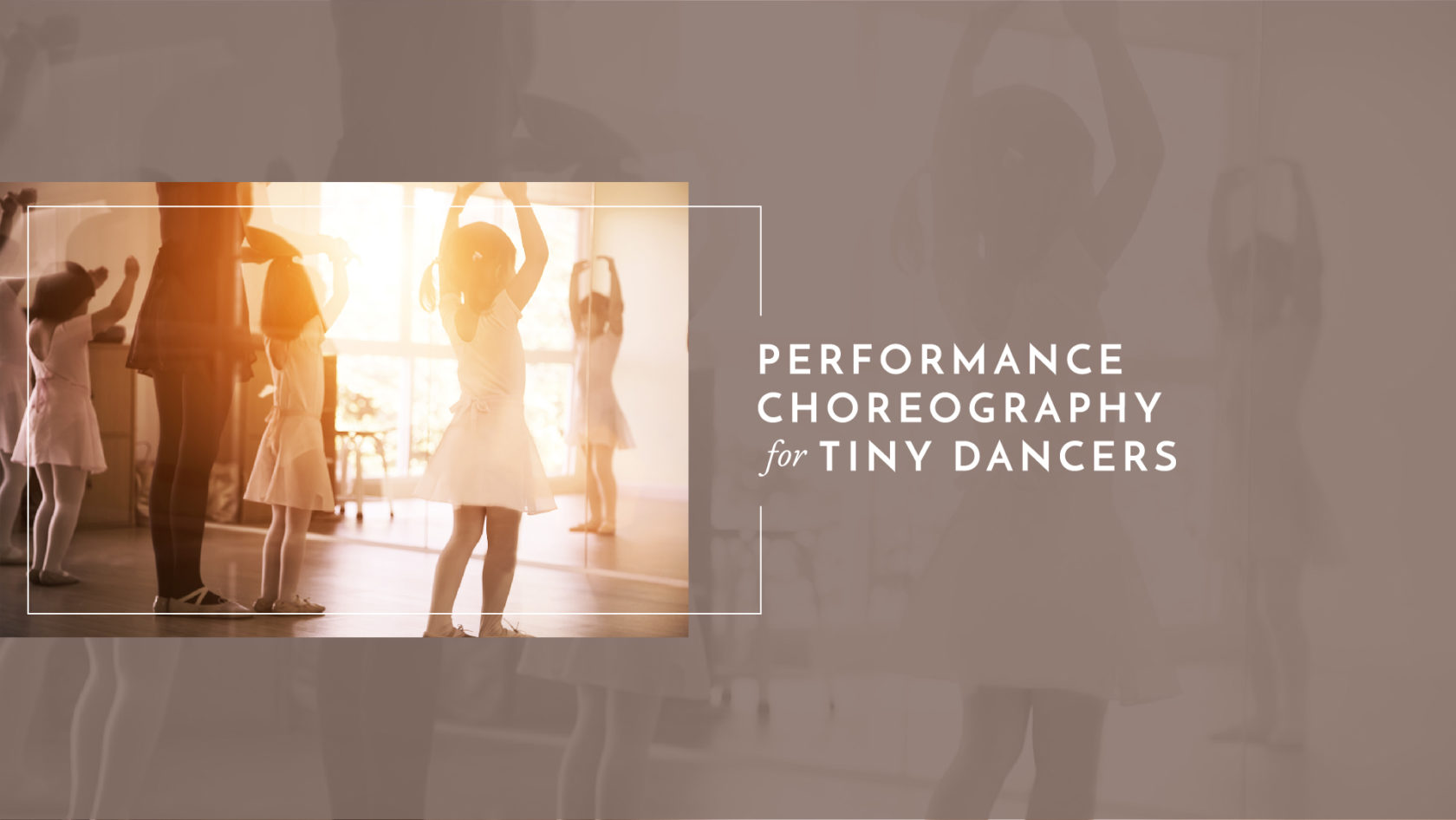From the well seasoned ballet teacher to the novice, and everyone in between, putting together a performance piece for the youngest dancers can be tricky.
Set The Expectations . . . For Yourself
Choreographing for 3-6 year olds can feel a bit numb at times. The simple fact is they have far more limitations than we prefer to work with. Where they bounce, we wish to grand jeté. Where they tippy toe, we wish to pirouette.
Setting expectations from the very start that your little dancers will not, cannot, and should not be expected to actually execute technical ballet steps will put you in a far better mental place when you find yourself swaying back and forth for the millionth time in a two minute dance.
The Steps To Do
Obviously we want to pull from their regular class work as this is the material they know. Throwing in something brand new to them does not often turn out so great. Here are the steps I try to work into my 3-6 year old dances:
- Simple Port De Bras
- Pliés
- Sautés (jumps with feet together)
- Sways side to side
- Twirls (no more than one rotation at a time)
- Tendu (Showing Toes)
- Showing Heels
- Sauté Échappé (jump out and in)
- Be Small Be Tall (squat down, rise up to tip toes)
- Gallops or Ballet Runs in a Circle
- Standing from a Kneeling Position
- For an advanced class: Down-Back-In-Up (Burpee)
The Music
But the steps are only one element. If we don’t arrange those steps with the music in a way that helps the students do well they will be unable to keep in time.
Some tips:
- DON’T make the counts essential. If your preschool dance hangs on the fact that everyone must be in their circle places on the 16th count, there will be problems. Instead of thinking in counting terms, think in phrase terms. How many phrases do you think it will take your dancers to do 4 sautés and one twirl? How many phrases to do a port de bras and 2 sways? The aim is to place benchmarks throughout the dance so everyone can somewhat dance on their own time but come back together for the section that follows.
- DO allow plenty of time. Almost always everything is going to take more time than you think. It isn’t that they dance slowly. They tend to dance at a slightly faster tempo. But it is that it takes them more than a moment or two to realize what they are supposed to be doing. Then another moment or two to remember how to do it. Then another moment or two to do it. Then another moment or two doing it a little longer than you asked them to. Once all those moments are done, then they are ready to move on to the next step.
- DON’T insist they count how many times. Asking a 3 year old to ONLY do 3 toe taps is a battle you do not want to take on. We can remind them and encourage them, but really we need to let this go. The fact they are doing the toe taps is a win. Remember, if you have factored in enough time to transition to the next step, then it won’t so much matter that they did a few extra
- DO choose music they can hear. The music needs to have a clear beat to it; something they can easily learn to clap to. It is also helpful if it has obvious cues. EX: If the melody changes in a pronounced way, this would be a good time to do something new in the dance like jumping.
Sing The Dance
This one thing changed my life. Well, at least it changed my teaching life—so, in a way it did change my life. If you can put words to the dance, this will help the kids remember the choreography in a huge way.
EXAMPLE (The beginning of a dance about an ice cream shop. Each dancer has an ice cream cone prop.)
Counts 1-8: 2 pliés, lift ice cream cone up high, bring it back down
Words to match the dance: I went to the ice cream shop today. I saw my friends on the way!
The kids love it. They love to sing/say it and the results are quite good.
Even though these little ones can’t do intricate ripples and dazzling allegro, it doesn’t mean they can’t do what they can do well and have fun while doing it! The choreography and the sing songy words might become a bit mind numbing at times for us teachers, but seeing their smiles and watching them feel proud makes it all worth it.
Related Articles


Comments
No comments for this post.
Add Comment